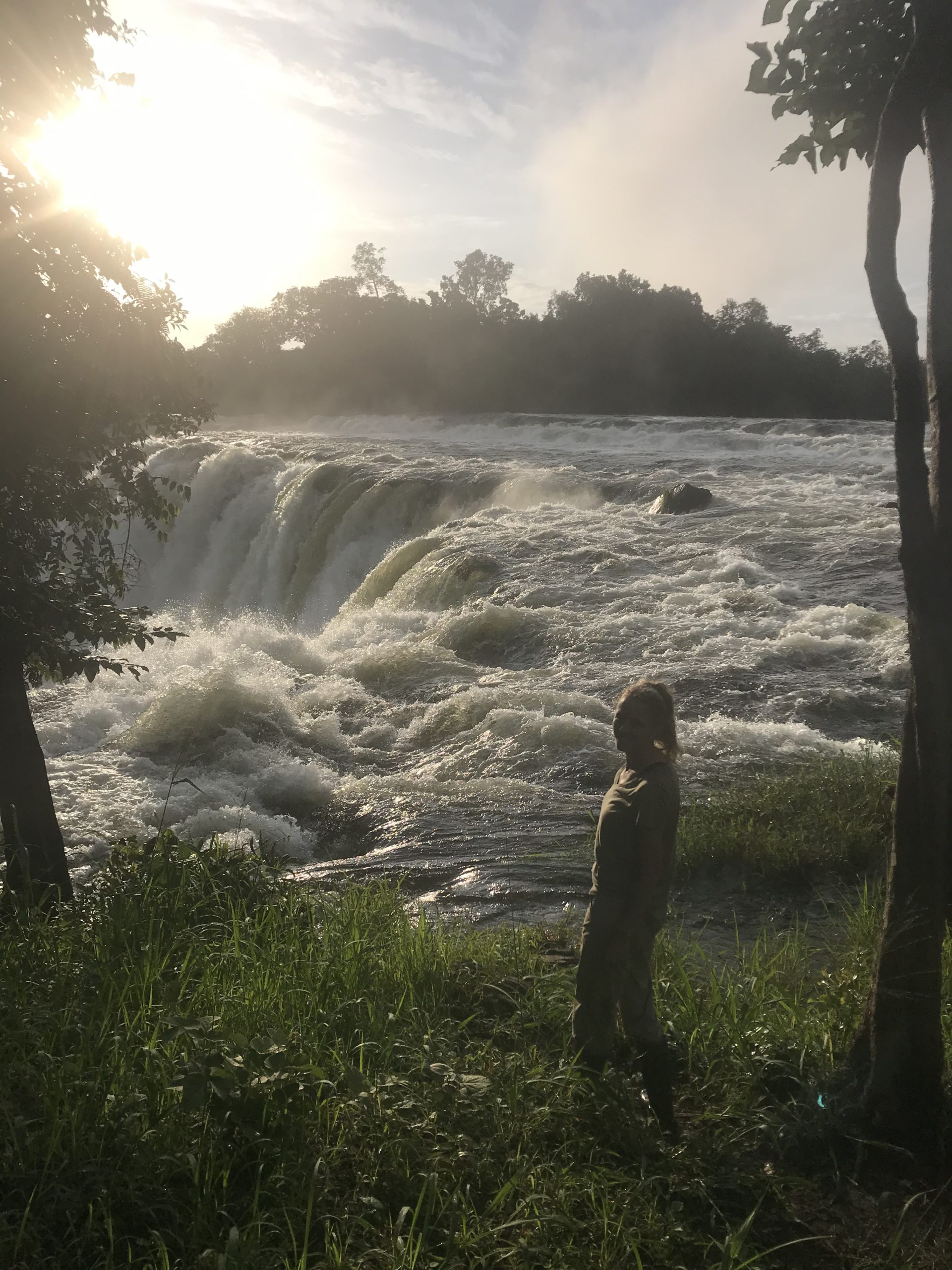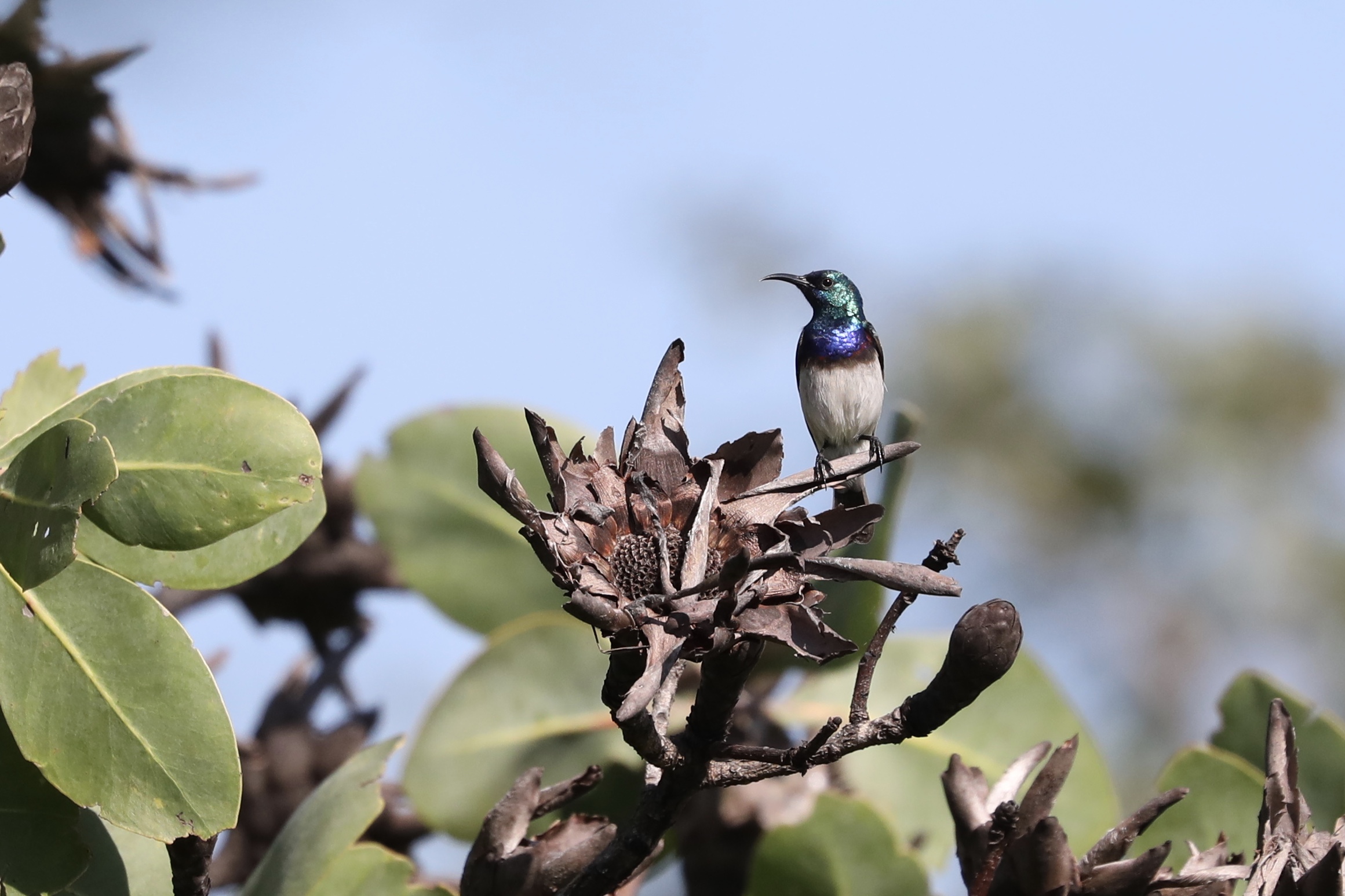We aren’t ones to chase waterfalls, because we are too busy chasing birds. But sometimes exceptions are made. Any by definition, exceptions are rare and unusual, and in my personal opinion, highly worth a visit.
I had found a waterfall that I really wanted to visit and Ross agreed that it would make a good stopover point before continuing north. Lumangwe Falls is the largest waterfall entirely within Zambia’s country limits and, dare I say it, rarely visited by tourists. Lumangwe Falls Campsite was somewhat challenging to find due to lack of sign-postage and poorly maintained roads, and in the end, I think we visited the lesser known of the two campsites that overlook the falls. It was, as was becoming custom, dark by the time we arrived which likely contributed to the confusion in finding where we wanted to go. We ended up at the campsite adjacent to the top of the falls as opposed to across from them but I think this little mishap worked to our advantage. The thunderous sound of tons of water crashing down lulled us to sleep and in the morning we woke up to appreciate the falls in all of their glory and we had the entire place all to ourselves. These falls were absolutely stunning. We stood next to the edge and walked down a small trail to appreciate the view from a different angle. But get too close and the mist will soak you! Without a doubt one of the most amazing waterfall experiences ever I’ve ever had!








I haven’t been to Victoria Falls yet, but a review I read of Lumangwe described it as “mini Vic Falls but without all of the people” and I know it was one of the largest waterfalls I’ve ever seen. Certainly the largest that Ross and I can say we were the only two people around. Camping next to the bank of a waterfall of this caliber is an experience I won’t soon forget. Simply amazing.
After spending the morning around the falls, we had one more spot to visit along the northern edge of Zambia, before heading in to Tanzania. Near the town of Mbala we had two targets to find, Oustalet’s Sunbird and Tanzania Masked Weaver. The sunbird is quite scarce, but thanks to a tip from Frank Willems, we decided to concentrate our effort on the degraded miombo around Ugani Pan. This proved to be a good strategy as we had a fantastic morning with six (!) species of sunbirds, including great looks at a male Oustalet’s Sunbird! We had a lot of other interesting birds in this area as well including Miombo and Whyte’s Barbets.


From here we headed east to a stakeout for the weaver. Tanzania Masked Weaver, also called Tanganyika Masked Weaver, is a highly range restricted species that is only found in the vicinity of Lake Tanganyika. Luckily we knew where to find them and after taking a very rough road, we finally arrived at a swamp that contained two different colonies of Tanzania Masked Weavers. Unfortunately the colonies were fairly far back in the swamp, but we still managed some good scope views. Naturally a group of people were gathered around us watching our every move. Ross joked that now he knows how the birds feel! At the second colony Ross wanted to audio record the bird, but as expected, a large group of locals had gathered to check out what we were doing. After showing them the birds, I walked a couple hundred meters down the road to the car and grabbed some bread and my bird book to show the locals. This worked like a charm and the entire group came down to me while Ross was left alone to finally be able to record the weavers. A win-win for all!






In the end Northern Zambia was a success! From here we made the decision to enter Tanzania from the south to continue exploring some little-visited areas! We planned to revisit Zambia to clean up later on in the trip!

Wow! What a great memory…sleeping and waking to the Falls in all their glory!